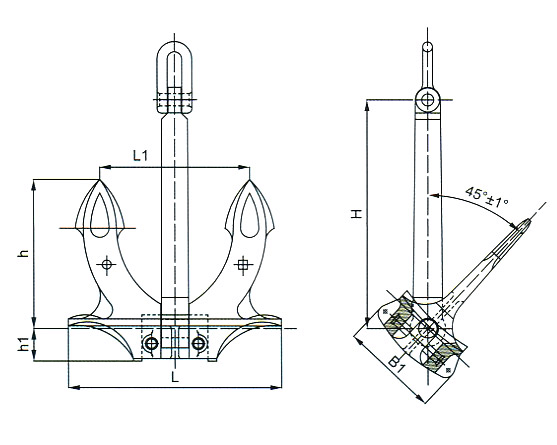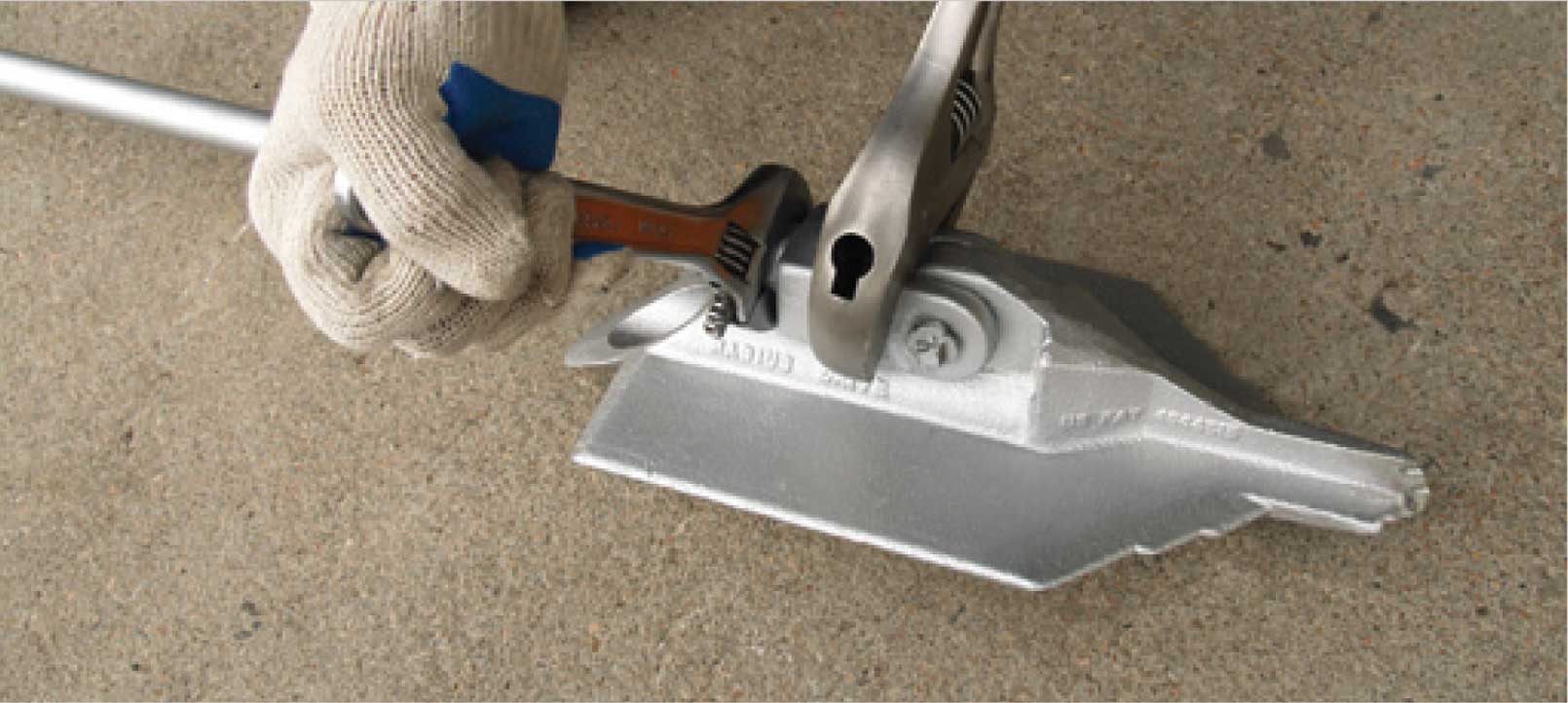The Role of An Earth Anchor in Improving Architectural Integrity
Effective Support Solutions Designed for Optimum Strength
The layout of efficient support systems is important in making certain maximum strength and reliability across numerous applications, particularly in civil and aquatic design. By using innovative materials and advanced design methods, these systems not only improve holding power but likewise adjust to tough environmental problems. As we discover the different sorts of anchor systems and the products that underpin their efficiency, it becomes apparent that the future of securing technology may hold also greater developments. What implications do these developments have for safety and security and efficiency criteria in the industry?
Value of Anchor Systems
Support systems play a critical function in numerous applications, from marine building and construction to overseas drilling and even in the security of frameworks on land. Their main function is to offer safe holding power, guaranteeing that frameworks stay safe and stable under different ecological problems. In aquatic atmospheres, anchors are vital for mooring vessels, protecting against drift because of wind, currents, or waves. Without trusted anchoring, ships might go to risk of crash or grounding, resulting in significant financial and environmental repercussions.
Along with aquatic applications, anchor systems are crucial in civil design, particularly in the construction of maintaining wall surfaces, bridges, and buildings in geologically difficult locations. These systems aid disperse loads efficiently, counteracting pressures such as dirt pressure and seismic task. The relevance of anchor systems includes the renewable resource sector, where they secure wind generators and offshore platforms, adding to the security and efficiency of power generation.
Inevitably, the performance of a support system is essential to the security, durability, and capability of different frameworks, making their layout and execution a vital part in engineering and building techniques across several industries.
Cutting-edge Products in Anchor Style

Modern advancements in products science have actually dramatically changed anchor design, enhancing performance and resilience. The incorporation of high-strength alloys and composite products has actually led to anchors that can hold up against severe environmental problems while preserving structural stability. These innovative materials not only use superior tensile strength but also minimize weight, enhancing convenience of installation and handling.
One noteworthy development is the use of carbon fiber reinforced polymers (CFRP), which give exceptional rust resistance and high strength-to-weight proportions. This enables the layout of anchors that are both incredibly resilient and light-weight, making them suitable for aquatic applications where direct exposure to saltwater can lead to material destruction.
In addition, developments in finishings-- such as innovative epoxy and galvanization-- more shield steel supports from deterioration, prolonging their life span. These coverings can be customized to satisfy certain ecological challenges, making certain that supports carry out dependably also in severe conditions.
Furthermore, the assimilation of wise materials, which can adapt to changing tons and environmental factors, is leading the way for future support styles. These advancements underscore a pattern in the direction of higher performance and reliability in anchoring options, inevitably improving safety and security across various applications.
Kinds of Efficient Support Systems
Reliable securing solutions are important for making certain security and safety and security in numerous applications, from building and construction to aquatic procedures. A number of kinds of reliable anchor systems stand apart for their effectiveness and adaptability to various atmospheres.
One popular kind is the screw anchor, which makes use of a helical layout to supply discover this superior holding power in soil and soft ground. These anchors are particularly useful in momentary structures and can be easily gotten rid of and recycled.
One more utilized system is the driven stack support, typically utilized in aquatic and hefty construction projects. These anchors are driven deep right into the ground, offering excellent resistance to side forces, making them suitable for sustaining huge structures.
For aquatic applications, the mooring buoy anchor system is essential. This system includes resilient tools connected to anchors on helpful site the seabed, permitting vessels to remain secure while minimizing drag from currents and winds.
Last but not least, the deadweight support system counts on hefty weights to supply stability and is frequently made use of in overseas installations. Each type of support system is made to fulfill certain demands, making sure the security and honesty of frameworks and vessels in different problems.
Security Requirements and Laws
Ensuring the security and dependability of anchoring systems includes adherence to stringent safety and security requirements and guidelines. These criteria are developed by numerous companies, consisting of the American Society for Screening and Materials (ASTM), the International Company for Standardization (ISO), and local building ordinance. Compliance with these guidelines is vital to guarantee that anchoring systems can hold up against environmental stress and anxieties and tons, lowering the threat of failure.
Evaluating and qualification procedures are basic components of safety standards. Anchoring systems have to go through rigorous assessments, consisting of tensile strength tests, tiredness tests, and environmental effect evaluations. These examinations assist figure out the systems' efficiency under real-world problems, ensuring they fulfill or exceed the needed security thresholds.
Furthermore, suppliers are needed to supply detailed requirements and directions for installation and upkeep, which are integral to upholding safety standards. Normal evaluation and upkeep methods must additionally be developed to recognize possible weaknesses over time.
Future Patterns in Anchor Modern Technology
The future of anchor more information modern technology is poised for considerable developments, driven by the enhancing need for enhanced security and efficiency in construction and engineering applications. Advancements are anticipated in products, style, and setup techniques, which will boost the stamina and longevity of anchor systems.
One emerging pattern is the assimilation of clever technology into support systems. Earth Anchor. By integrating sensors, these systems can keep an eye on stress, lots, and ecological problems in real-time, enabling for proactive upkeep and increased reliability. In addition, improvements in composite materials might cause lighter, yet more powerful supports that can stand up to extreme problems, reducing the total weight of structures


Furthermore, modular support systems are getting grip, enabling simpler setup and adaptability to numerous task demands. Earth Anchor. As the market embraces automation, robot setup methods could additionally improve the anchoring process, improving efficiency and precision
Final Thought
In conclusion, efficient support systems play a crucial duty in making sure the security and security of civil and aquatic engineering jobs. Adherence to security criteria and guidelines additionally highlights the significance of reliability in support systems.
The design of effective support systems is vital in ensuring optimal strength and dependability across different applications, especially in civil and aquatic engineering. As we explore the various kinds of anchor systems and the materials that underpin their performance, it ends up being obvious that the future of anchoring technology may hold also higher innovations.Making certain the safety and security and dependability of securing systems involves adherence to stringent safety and security standards and regulations.In final thought, effective anchor systems play a vital role in guaranteeing the security and safety of civil and aquatic engineering tasks. Adherence to security standards and policies further highlights the value of integrity in anchor systems.